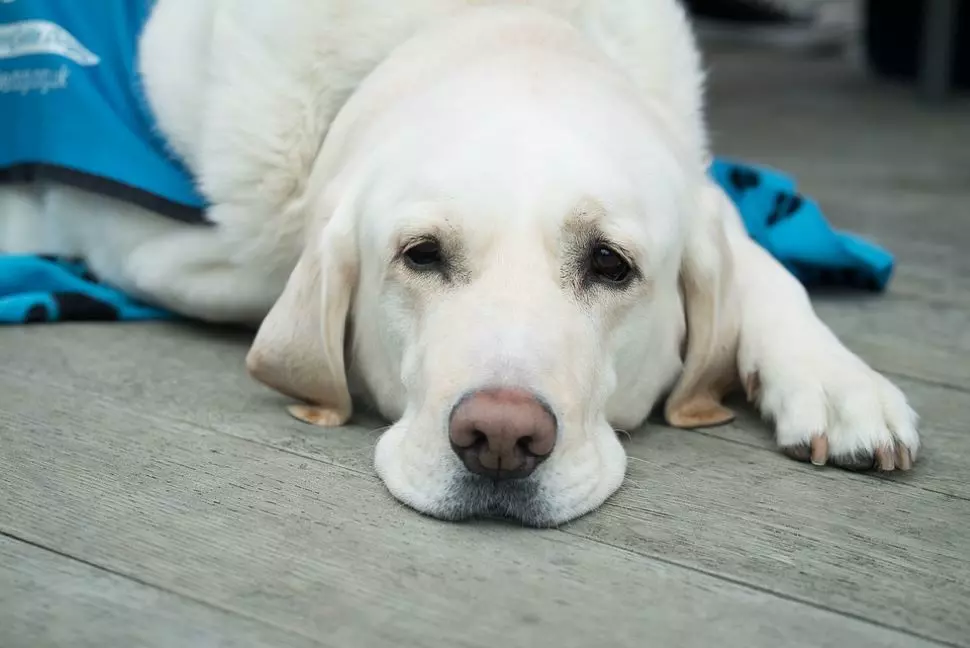Guide Dogs for the Blind, Everything You Need to Know
2022-08-20 | By Orcam Staff

Guide dogs for the blind are seen everywhere. You can hardly pass through an airport, mall or bustling city center these days without coming across a blind person and their guide dog. Dogs are the most popular guide animals for many reasons . Historically, they were used as shepherds and sometimes even as pets. It is only in recent decades that they became the most common guide animals for the blind. Until today, dogs are still mainly used as pets.
Dogs as Pets Throughout History

Pets have been a part of human society since the dawn of civilization. Since the time of the “caveman” to the modern “smartphone man,” pets have always been around. Throughout human history, royalty and high society kept pets mostly for entertainment and games. The “lower class” would usually use animals for work around the farm or in nomadic society. Cows, horses, and sheep were kept outside the house at the farm or among the nomadic tents. These animals had less of a pet-like relationship with human society because of their size and nature.
Dogs, which are smaller animals, fit into houses or tents without taking up too much space. They are also more gentle with children and are less likely to harm them by accident. Another reason dogs were kept around the house is their high level of alert in case of intruders. In case another human or even an animal would approach at night, dogs would alarm their owners by loud barking.
Guide Dogs for the Blind, Both Friendly and Smart

A dog is naturally friendly, outgoing, and playful. An animal with natural happiness can help to increase the owner’s morale on a daily basis. Additionally, dogs' attention to their owners is another major benefit they have as service animals. Dogs can become aware of when a human is sad or unhappy. This is because of their high level of emotional intelligence. When dogs see sad people, they will usually try to cheer them up and make them feel better.
Dogs are very cautious of their owner's lives in the face of potential hazards. They will try to prevent their owners from any kind of danger they are able to detect. Guide dogs go through intense training to help their owners avoid obtaining injuries from their surroundings such as passing cars, street benches, poles, etc. A guide dog needs to be very smart in order to comprehend the details involving this type of training. The dogs used as guide animals undergo a screening process to verify their ability to understand these hazards and act accordingly when they detect them. Dogs care so much about human life that they will warn people of a danger they have detected and often even risk their own lives to save people.
These behaviors have led to dogs being used as service animals to help fire departments, police, and military. Dogs are very smart and can understand many things that they are expected to do. They react well to training and are easy to interact with. Guide dogs for the blind need to have all of these qualities. However, dogs are not the only animals used for guiding people with disabilities.
Dogs Are Not the Only Guide Animals

Miniature horses have only been used as guide animals since 1999, and are growing in their popularity. They have become so common that even airlines allow miniature horses aboard an airplane. Southwest Airlines was the first airline to do so. There are more than a few differences between guide dogs for the blind and guide horses. A miniature guide horse is trained over the span of eight months whereas a guide dog is trained for between three to nine months. A miniature horse has an average lifespan of thirty years, whereas a dog has a lifespan of eight to sixteen years. Considering their lifespan, miniature horses can serve a blind person for a longer period of time. A guide animal that can remain with its owner for a longer period of time is much more convenient for the owner.
Guide animals and owners take time, effort and patience to adapt to each other. Once that relationship is established, both the animal and owner begin to understand each other better. In addition, a bond is created between them, one of reliability and companionship.
Guidance Through Artificial Intelligence

Guide dogs for the blind are life-changing for those who need them. However, they can’t perform all of the tasks that blind people require. This is where assistive technology come in. OrCam MyEye 2 is the most advanced wearable device for the blind and visually impaired. It is used for independent reading, shopping, identifying people, and many more purposes. This device has changed the lives of people who are blind or visually impaired all over the world.
More Stories

Veterans Associations and How They Can Help You - OrCam
2024-06-24 | By OrCam Staff

Top AI Assistive Technologies Enhancing Accessibility | OrCam
Explore how AI-driven assistive technologies are revolutionizing accessibility for individuals with disabilities.
2024-05-29 | By OrCam Staff

AI in Education: Enhancing Accessibility for All Students | OrCam
AI is changing the face of education by enhancing accessibility. Explore practical applications and success stories in educational technology.
2024-05-28 | By OrCam Staff

Revolutionizing Accessibility: How AI & IoT Enhance Assistive Technology
Explore the impact of AI and IoT on assistive tech, transforming accessibility and empowering lives with smart innovations.
2024-05-28 | By OrCam Staff

Transforming Lives: AI & IoT in Assistive Tech | Personal Stories
Read inspiring personal stories about the transformative power of AI and IoT in assistive technology.
2024-05-28 | By OrCam Staff

Unlock Reading Freedom: Tech for the Visually Impaired
Explore the latest in assistive technology designed to empower visually impaired individuals with independence and confidence.
2024-05-23 | By OrCam Staff



